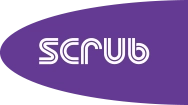As sports and live events find ways of re-establishing themselves under the restrictions of social distancing, companies providing media coverage are finding solutions that allow their production teams to work remotely. Along with high quality audio and video streams, media production relies on specialist equipment that supports show-control automation and talkback communication. In most situations data is linked between team members over the public internet with specialist IP services providing security, resilience and acceptable latency.
We will be looking at a remote workflow via a series of Glensound products. Glensound manufacture a range of commentary units that are highly suitable for remote, IP based media production. These devices have IP interfacing for audio, show-control and remote-control functions. Allowing for example, a sound engineer to remotely adjust the presenter’s microphone gain while monitoring the output and signal meter. When a remote production involves several presenters and requires show control and talkback, the Glensound commentary units can be key components.
For remote IP audio interfacing, the Glensound devices feature Audinate Dante AoIP, which is widely supported on numerous professional audio units. There are many options for networking Dante devices across large distances. Fibre cabling can be used to link to remote commentary positions, on a golf course this could be several kilometres away, while a production team all working at remote locations can be linked by an enterprise WAN. It is also important to note if the workflow requires integration with broadcast systems operating on SMPTE 2110 or Ravenna, the Glensound AoIP can be switched to the compatible AES67 profile. Dante Domain Manager is required to integrate Dante devices in a SMPTE 2110 network.
Simple, Safe, Secure
The Glensound Inferno and Minferno are desktop audio devices for single presenter commentary just requiring a microphone and headphones to be connected. These devices can be cascaded for multiple commentator applications. The Inferno and Minferno can be remote controlled and monitored from a web browser. For security, the Inferno has primary and secondary Dante network connections. Inferno’s commentator input is switchable on the rear panel to be line/mic/48v and has adjustable input gain. The input is processed by Glensound’s ‘Referee’ compressor limiter system, that applies a variable rate compressor to peaks so that no clipping occurs, without affecting the rest of the audio signal.
In addition, Inferno provides extensive talkback communications with seven destinations for team members requiring their own balance of programme audio, talkback and additional sources. Illuminated talkback buttons make the talkback functions simple to operate. Each input can be independently selected to the user’s left, right ear or both ears . The headphone connection is available on a 3.5mm and a 6.35mm jack socket. The Minferno shares many of the same features of the Inferno, but with 3 talkback channels.
The Inferno contains a web server which allows configuration of each button on the unit to be on/off latching, momentary (push to talk), always on, and off when pushed (cough), or in an intelligent mode where a short press latches or a longer press is just momentary.
When the situation calls for something more complex
The Glensound Paradiso and Paradiso Lite are designed for more complex applications that require three commentator input channels and a large talkback matrix. The Paradiso devices are IP remote controlled by the GlenController, a Windows 10 application. GlenController provides in depth functionality and added management features such as firmware upgrading. Paradiso is suitable for larger systems that have multiple commentators and/or multiple programme output, for example multi-language broadcasting. Paradiso and Paradiso Lite share many of the same features, Paradiso offers advance features such as programmable ePaper button displays.
Staying Connected
There are many options to link the Glensound devices together over IP and interface them with other devices, allowing production team members working remotely to share a fully functioning commentary/talkback system. The control side requires a network connection to be established, and in some cases, VPNs can be used to facilitate this. For the audio, Dante Domain Manager 1.1 introduced the ability to use GPS clocks to keep Dante devices synchronous in geographically separated locations, allowing for audio to travel vast distances at a usable latency. DDM is available in three versions Silver, Gold and Platinum, that support different numbers of domains and Dante devices, and offer tiers of administrative and security features such as Audit logging, LDAP integration, High Availability Redundancy, and SNMP monitoring.
Here to Stay
Remote workflows have long been important to the broadcast industry and the recent global crisis has underlined the need for them. When looking to start or expand any organizations remote workflow capability, be sure to keep in mind these solutions as it seems the ability to work remotely is here to stay.



